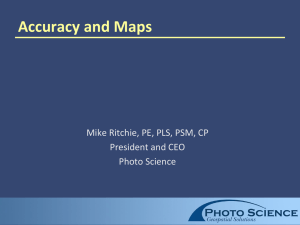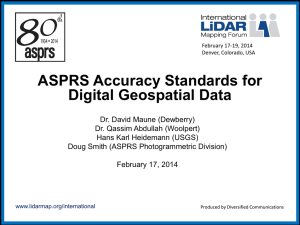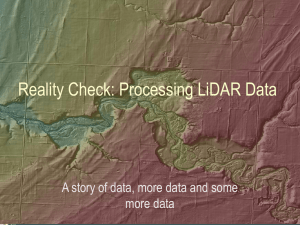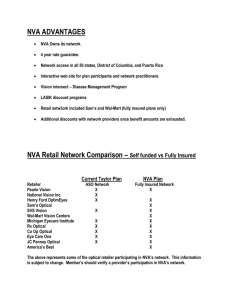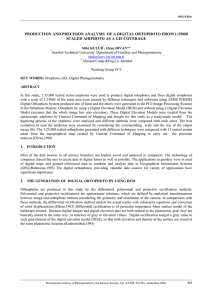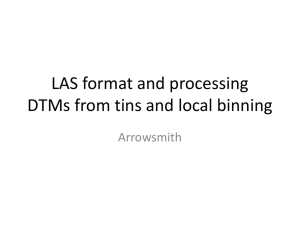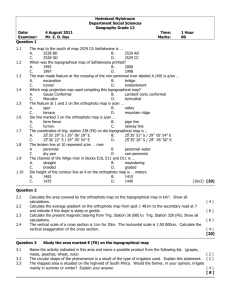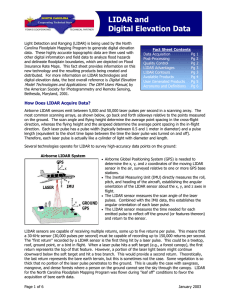ASPRS_Accuracy_Standard_Response_Anonymous
advertisement
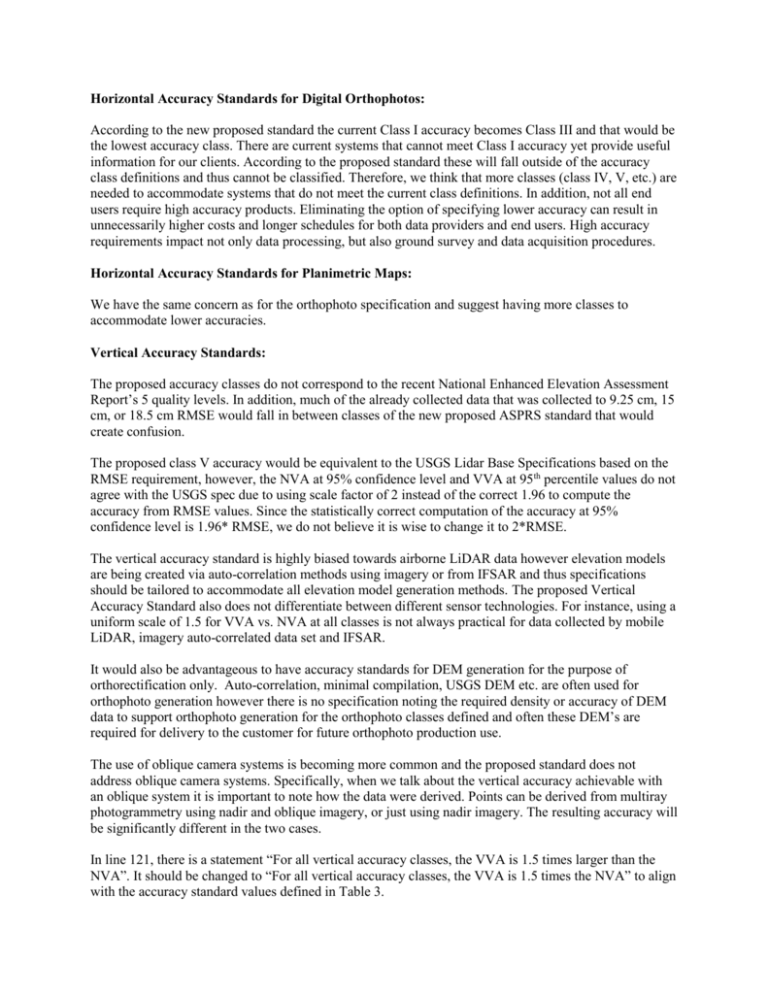
Horizontal Accuracy Standards for Digital Orthophotos: According to the new proposed standard the current Class I accuracy becomes Class III and that would be the lowest accuracy class. There are current systems that cannot meet Class I accuracy yet provide useful information for our clients. According to the proposed standard these will fall outside of the accuracy class definitions and thus cannot be classified. Therefore, we think that more classes (class IV, V, etc.) are needed to accommodate systems that do not meet the current class definitions. In addition, not all end users require high accuracy products. Eliminating the option of specifying lower accuracy can result in unnecessarily higher costs and longer schedules for both data providers and end users. High accuracy requirements impact not only data processing, but also ground survey and data acquisition procedures. Horizontal Accuracy Standards for Planimetric Maps: We have the same concern as for the orthophoto specification and suggest having more classes to accommodate lower accuracies. Vertical Accuracy Standards: The proposed accuracy classes do not correspond to the recent National Enhanced Elevation Assessment Report’s 5 quality levels. In addition, much of the already collected data that was collected to 9.25 cm, 15 cm, or 18.5 cm RMSE would fall in between classes of the new proposed ASPRS standard that would create confusion. The proposed class V accuracy would be equivalent to the USGS Lidar Base Specifications based on the RMSE requirement, however, the NVA at 95% confidence level and VVA at 95th percentile values do not agree with the USGS spec due to using scale factor of 2 instead of the correct 1.96 to compute the accuracy from RMSE values. Since the statistically correct computation of the accuracy at 95% confidence level is 1.96* RMSE, we do not believe it is wise to change it to 2*RMSE. The vertical accuracy standard is highly biased towards airborne LiDAR data however elevation models are being created via auto-correlation methods using imagery or from IFSAR and thus specifications should be tailored to accommodate all elevation model generation methods. The proposed Vertical Accuracy Standard also does not differentiate between different sensor technologies. For instance, using a uniform scale of 1.5 for VVA vs. NVA at all classes is not always practical for data collected by mobile LiDAR, imagery auto-correlated data set and IFSAR. It would also be advantageous to have accuracy standards for DEM generation for the purpose of orthorectification only. Auto-correlation, minimal compilation, USGS DEM etc. are often used for orthophoto generation however there is no specification noting the required density or accuracy of DEM data to support orthophoto generation for the orthophoto classes defined and often these DEM’s are required for delivery to the customer for future orthophoto production use. The use of oblique camera systems is becoming more common and the proposed standard does not address oblique camera systems. Specifically, when we talk about the vertical accuracy achievable with an oblique system it is important to note how the data were derived. Points can be derived from multiray photogrammetry using nadir and oblique imagery, or just using nadir imagery. The resulting accuracy will be significantly different in the two cases. In line 121, there is a statement “For all vertical accuracy classes, the VVA is 1.5 times larger than the NVA”. It should be changed to “For all vertical accuracy classes, the VVA is 1.5 times the NVA” to align with the accuracy standard values defined in Table 3. The proposed assessment method for relative accuracy between LiDAR swaths does not specify the minimum amount of check points required per sidelap, endlap and crossflight pair. This should be defined for each type of overlap and a description of the methodology for this assessment needs to be better defined. Appendix B – Data Accuracy and Quality Examples Table 6 (Vertical Accuracy/Quality Examples for Digital Elevation Data) suggests that the recommended minimum point density to support 1’ contour generation is 2 ppsm. It should be specified if this is with or without the collection of supplemental breaklines. Current practice is that 1 ppsm Lidar is sufficient with the collection of supplemental breaklines. Table 6 suggested the recommended minimum point density from LiDAR to support each vertical accuracy class. There is no guideline or recommended GSD from imagery collection for each class if traditional photogrammetric methods are used to generate digital elevation data or contours. Mean Errors On page 23 the proposed standard states: “As a “rule of thumb,” there is no need to incur additional costs to apply a “z-bump” to raise or lower an entire elevation datasets to have a mean error of zero so long as the NVA accuracy standard is satisfied” We do not agree with this and we suggest that this section should be re-written. We believe that good practice is to try to eliminate systematic errors from the dataset as much as possible. Of course there should be some tolerance, but following the guidelines as written may result in providing products that could be misunderstood or misused by end users.
